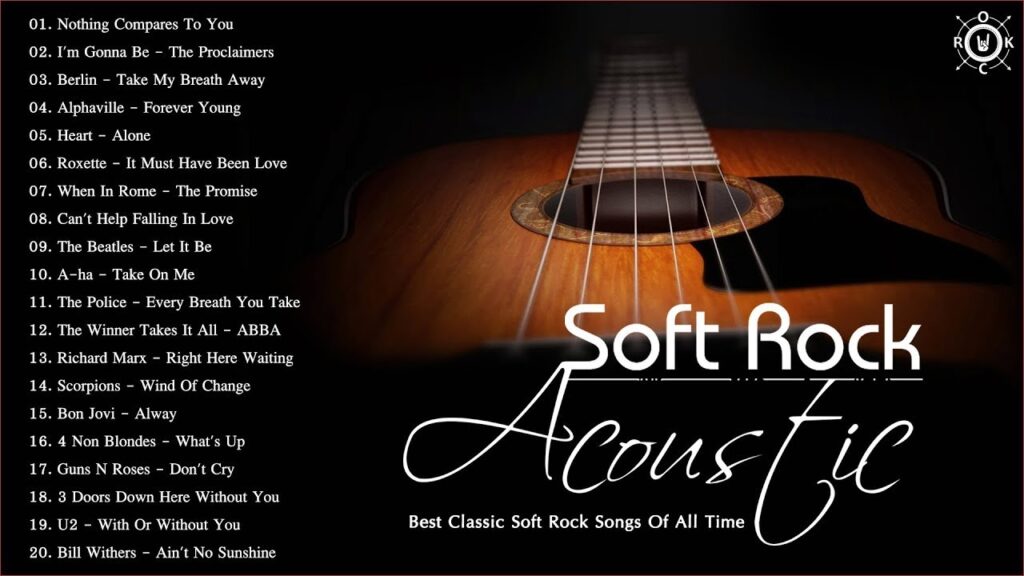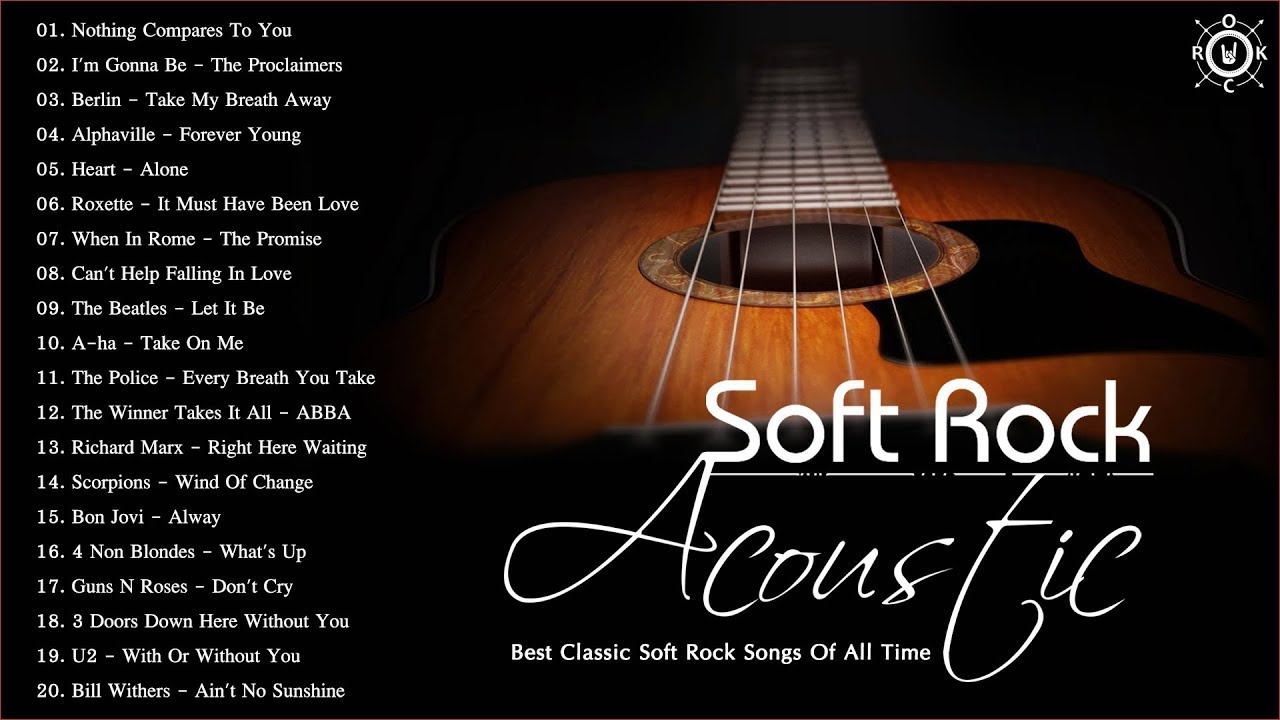
Crafting Heartfelt Harmonies: A Comprehensive Guide to DIY Soft Rock Acoustic Music with Lyrics
Have you ever felt the urge to express yourself through the gentle strumming of an acoustic guitar and heartfelt lyrics, creating your own soft rock masterpiece? The allure of DIY soft rock acoustic music, complete with original lyrics, is powerful. It’s a journey of self-expression, a creative outlet, and a way to connect with others through music. This comprehensive guide is designed to equip you with the knowledge and inspiration you need to embark on this fulfilling musical adventure. We’ll explore everything from the fundamentals of songwriting and acoustic arrangements to recording tips and performance techniques, empowering you to create and share your own unique soft rock acoustic songs with lyrics.
Unveiling the Essence of DIY Soft Rock Acoustic Music
DIY soft rock acoustic music is more than just a genre; it’s an ethos. It’s about taking control of the creative process, from initial inspiration to the final performance. It encompasses a wide range of styles, characterized by mellow melodies, introspective lyrics, and the prominent use of acoustic instruments, particularly the guitar. The ‘soft rock’ element implies a focus on accessibility and emotional resonance, while the ‘acoustic’ aspect emphasizes the organic and intimate nature of the sound. The addition of original lyrics allows for a deeply personal and authentic form of artistic expression.
This approach allows artists to sidestep traditional music industry gatekeepers, fostering creativity and empowering individuals to share their music directly with audiences. It’s a vibrant community of musicians who value authenticity, collaboration, and the joy of creating music for the love of it.
The Enduring Appeal of Acoustic Soundscapes
The appeal of acoustic music lies in its warmth and intimacy. The natural resonance of acoustic instruments creates a connection that electronic sounds often struggle to replicate. This intimacy is perfectly suited for soft rock, a genre that thrives on emotional honesty and vulnerability. DIY musicians leverage this by focusing on strong songwriting, expressive vocals, and arrangements that enhance the emotional impact of the lyrics.
Songwriting Essentials for Soft Rock Acoustic Gems
At the heart of any great song lies strong songwriting. For soft rock acoustic music, this means crafting melodies that are both memorable and emotionally resonant, paired with lyrics that tell a story or convey a feeling. Here’s a breakdown of key songwriting elements:
- Melody: Aim for melodies that are easy to sing and hum along to. Consider the emotional tone you want to convey and choose notes and rhythms that support that feeling.
- Lyrics: Soft rock lyrics often explore themes of love, loss, hope, and introspection. Be honest and authentic in your writing, and don’t be afraid to be vulnerable.
- Structure: A typical song structure includes verses, a chorus, and a bridge. Experiment with different structures to find what works best for your song.
- Chord Progressions: Soft rock often utilizes common chord progressions that are pleasing to the ear. Experiment with different chord voicings and inversions to add your own unique touch.
Finding Your Lyrical Voice
Developing your own lyrical voice is crucial for creating authentic and compelling soft rock songs. This involves exploring your own experiences, emotions, and perspectives and finding ways to express them in a way that is both personal and relatable. Don’t be afraid to experiment with different writing styles and techniques, and draw inspiration from your favorite songwriters.
Acoustic Guitar Arrangements: Crafting the Perfect Sound
The acoustic guitar is the cornerstone of soft rock acoustic music. Mastering different strumming patterns, fingerpicking techniques, and chord voicings is essential for creating compelling arrangements. Consider the following:
- Strumming Patterns: Experiment with different strumming patterns to find rhythms that complement your melody and lyrics.
- Fingerpicking: Fingerpicking can add a delicate and intricate texture to your arrangements.
- Chord Voicings: Explore different chord voicings to add depth and richness to your sound.
- Dynamics: Use dynamics to create contrast and build emotional intensity in your songs.
Essential Guitar Techniques for Soft Rock
Beyond basic chords and strumming, mastering techniques like hammer-ons, pull-offs, and slides can add flair to your acoustic arrangements. Experiment with these techniques to create interesting textures and melodic embellishments. According to leading guitar instructors, consistent practice and focused attention to detail are key to mastering these techniques.
Home Recording Setup for DIY Acoustic Artists
Recording your music at home has never been easier. With a few essential pieces of equipment and some basic knowledge, you can create professional-sounding recordings of your soft rock acoustic songs. Here’s a basic home recording setup:
- Acoustic Guitar: A quality acoustic guitar is essential.
- Microphone: A condenser microphone is ideal for capturing the nuances of acoustic instruments and vocals.
- Audio Interface: An audio interface connects your microphone to your computer and converts the analog signal to a digital signal.
- DAW (Digital Audio Workstation): A DAW is software that allows you to record, edit, and mix your music. Popular DAWs include Ableton Live, Logic Pro X, and Pro Tools.
- Headphones: Studio headphones are essential for monitoring your recordings.
Mastering the Art of Home Recording
Home recording is a skill that takes time and practice to master. Experiment with different microphone placements, recording techniques, and mixing strategies to find what works best for your sound. Online resources and tutorials can be invaluable for learning the ins and outs of home recording. A common pitfall we’ve observed is neglecting proper room acoustics, which can significantly impact the quality of your recordings. Investing in acoustic treatment can make a world of difference.
Vocal Performance: Delivering Emotional Impact
Your vocal performance is crucial for conveying the emotional impact of your soft rock acoustic songs. Focus on clear diction, proper breath control, and expressive phrasing. Consider the following:
- Diction: Enunciate your words clearly so that your lyrics are easily understood.
- Breath Control: Proper breath control is essential for maintaining consistent pitch and volume.
- Phrasing: Use phrasing to add emotion and emphasis to your lyrics.
- Vocal Warm-ups: Always warm up your voice before singing to prevent strain and improve your performance.
Connecting with Your Audience Through Song
Ultimately, the goal of vocal performance is to connect with your audience on an emotional level. Sing with passion and conviction, and let your personality shine through. According to vocal coaches, authenticity is key to delivering a memorable and impactful performance.
Performing Live: Sharing Your Music with the World
Performing live is a rewarding way to share your music with the world and connect with your audience in person. Whether you’re playing in a coffee shop, a bar, or a concert hall, there are a few things to keep in mind:
- Rehearse: Rehearse your songs thoroughly so that you can perform them confidently and smoothly.
- Connect with Your Audience: Make eye contact with your audience and engage with them between songs.
- Promote Your Shows: Let people know about your upcoming shows through social media, email, and word of mouth.
- Be Yourself: Let your personality shine through and have fun!
Building a Fanbase Through Live Performance
Live performance is an excellent way to build a fanbase and connect with your audience on a deeper level. By delivering engaging and memorable performances, you can create a loyal following that will support your music for years to come. Many successful musicians attribute their early success to consistent live performances and building relationships with their fans.
The Role of “Acoustic Amp Simulators” and Virtual Instruments
Although the core of DIY soft rock acoustic music lies in the organic sound of acoustic instruments, modern technology offers tools to enhance and expand your sonic palette. Acoustic amp simulators, for example, can add warmth and depth to your guitar tone, while virtual instruments can provide additional layers of texture and instrumentation. These tools should be used judiciously, however, to avoid sacrificing the authenticity and intimacy that defines the genre.
Experimenting with Digital Tools Wisely
The key to using digital tools effectively is to experiment and find what works best for your music. Don’t be afraid to try new things, but always keep the core principles of soft rock acoustic music in mind. Remember, the goal is to enhance your sound, not to replace it.
Navigating Copyright and Licensing for Original Songs
Understanding copyright and licensing is essential for protecting your original songs and ensuring that you receive proper credit and compensation for your work. Here’s a brief overview of key concepts:
- Copyright: Copyright is a legal right that protects your original musical works from unauthorized use.
- Licensing: Licensing allows you to grant permission for others to use your music in exchange for royalties.
- Performance Rights Organizations (PROs): PROs like ASCAP, BMI, and SESAC collect royalties for public performances of your songs.
Protecting Your Creative Work
Protecting your creative work is crucial for ensuring that you receive the recognition and compensation you deserve. Consult with a music lawyer or industry professional for guidance on copyright and licensing issues. Leading experts in music law emphasize the importance of registering your copyrights and understanding your rights as a songwriter.
DIY Soft Rock Acoustic: A Canvas for Self-Expression
Creating your own DIY soft rock acoustic music with lyrics is a journey of self-discovery and artistic expression. It’s an opportunity to share your unique perspective with the world, connect with others through music, and experience the joy of creating something beautiful. Embrace the process, experiment with different sounds and styles, and don’t be afraid to be yourself. The world needs your music.
So, grab your guitar, open your heart, and let the melodies flow. Share your experiences with DIY soft rock acoustic music in the comments below; we’d love to hear your stories and songs. Explore our advanced guide to home recording techniques for further insights. Contact our experts for a consultation on crafting the perfect soft rock acoustic arrangement.

